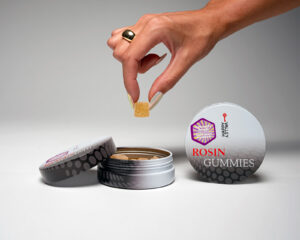For many cannabis users, drug tests can be a major source of anxiety. Though a growing number of states are legalizing adult use and medical cannabis, many organizations are far less tolerant about cannabis. Even in states where cannabis is legal for recreational use, cannabis appearing in a drug test may result in the loss of a job, expulsion from school, or many other penalties. Find out how to pass a drug test the ethical way to avoid potential conflict.
What Are the Different Types of Drug Tests?
There are several different methods for testing if cannabis is in your system. Law enforcement, employers, treatment providers, and criminal justice professionals use a variety of methods to detect cannabis in your system, along with other substances. Some drug tests screen for relatively recent drug use, while others can screen substances taken weeks before the test. Detection of substances in drug tests depends on the following variables:
- Method of testing
- Which substances were consumed
- The dosage of the substance
- Actions taken after consumption
The following drug screening methods are the most common means of testing in the United States.
Urine Screens
If your employer requires a pre-employment drug screen, there is around a 90% chance it will be a urine screen. These tests are also widely used in rehabilitation and detox organizations to check for substances. Urine drug tests can detect cannabis, cocaine, amphetamines, alcohol, opiates, phencyclidine (PCP), and other drugs.
The Substance Abuse and Mental Health Services Administration (SMHSA) recommends urine screens for cannabis detection. According to the Journal of Psychiatry, urine screening is the method for cannabis screening, as urine holds higher concentrations of cannabis for longer periods of time. Additionally, getting and processing urine samples is a great deal easier than other methods.
Generally speaking, urine screens can detect cannabis for three to 30 days after consumption. As stated before, detection depends on the test method, the potency and dosage of the cannabis, and the user’s behavior after cannabis use.
Saliva-Based Drug Tests
While other drug test methods can look further back, saliva-based drug testing detects only recent cannabis use, with nearly instant results. Saliva-based drug tests swab saliva from the test subject’s mouth, or requires spitting into a cup. Though these tests can detect several substances for longer periods, saliva tests generally detect cannabis for 10 to 24 hours after use. Some more advanced saliva tests can find cannabis in your system up to 72 hours prior to use.
Blood Tests:
Blood tests are the most accurate and sensitive drug tests, but are also among the most invasive. These tests have high-quality results and detection sensitivity, but rely on phlebotomists and lab analysis. Nearly any drug can be detected in a blood test, and cannabis content can be detected weeks after use.
Hair Follicle Drug Tests:
Hair follicle drug tests are among the least invasive and least accurate. These tests cannot show the evidence of recent cannabis use, but over longer term. Evidence of cannabis use can remain in hair follicles for months, sometimes up to 90 days. About one-and-a-half inches of hair is needed for hair follicle testing. Hair grows at an approximate rate of half an inch per month, and only the newest hair is tested.
More than other drug tests, hair follicle tests have a history of inaccuracy. Often times, these tests trigger false positives in the event that a non-user is in contact with second-hand cannabis smoke. Though hair follicle drug tests are sensitive and can find trace amounts of cannabis for longer periods of time, they are the most likely to produce false positives and used by a minority of employers and organizations.
Perspiration Drug Detection Tests:
Perspiration drug tests are relatively new, and used mainly in the recovery community, specifically for people on probation or parole. These tests screens for cannabis through a transdermal patch on the test subject’s skin, which typically remains for 14 days. The perspiration gathered on the patch can be analyzed for analysis.
How Long Does Cannabis Stay in Your System?
There are several factors that determine the length of time cannabis stays in your system. The half-life of cannabinoids in your system is dependent on the following factors:
- Cultivar: Not all cannabis cultivars are created equal. If you consume higher-potency cannabis products, cannabinoids will likely linger in your system for longer periods of time.
- Dosage: Though different cannabis cultivars have differing potencies when it comes to THC and other cannabinoids, even low-potency cultivars can stay in your system longer in large amounts. No matter what means of cannabis consumption you chose, be mindful of its dosage, and always err on the side of “slow and low.”
- Frequency of consumption: A daily cannabis user is much more likely to fail a drug test than an occasional consumer. This is especially true when it comes to hair follicle testing, or other short-term drug tests. Cannabis can be detectable in your biology for up to 90 days, and the more frequently a user consumes cannabis, the more likely cannabinoids will show in a drug test.
- Your biology and metabolism: Just as no two cannabis cultivars are identical, no two people have the same biology. How your endocannabinoid system processes and metabolizes cannabis is unique to your biological makeup, and some users are significantly more sensitive to cannabinoids.
- Your weight: Like alcohol and other substances, the amount of fat on your body plays a critical role in storing and metabolizing cannabis. People with lower body fat percentages are generally more sensitive to the effects of cannabis, but metabolize cannabinoids faster.
- Means of consumption: Different means of consumption have different metabolism times. For example, smoking or dabbing cannabis sends cannabinoids directly to the brain, while edibles or topicals take much longer to process and stay in your system longer.
With these variables in mind, there is no universal length in which it takes cannabis to leave your system. That said, the amount of time cannabis stays in your system can range from 48 hours to three months. No matter what cultivar or test you will be subjected to, abstaining from cannabis for weeks or months before a drug test is the only 100% effective way to ensure you pass a drug test. That said, there are ways to naturally speed up your metabolism and flush cannabis from your system.
How to Get THC Out of Your System
There may be temptation to buy chemical-based products or fake urine to pass a drug test, but these methods come with a degree of risk. Chemical detox and tampering has been shown to be largely ineffective and unregulated, sometimes resulting in severe repercussions. A 2011 study by the Primary Care Companion for CNS Disorders found that tampering and detoxification kits can cause psychosis and other undesirable effects.
“Clinicians need to be aware of the tampering techniques and the possibility of false-negative urine drug tests. Cognizance of inherent risks involved with using these techniques including psychiatric and/or medical complications is also warranted. The manufacture, sale, and use of these products have little or no regulation by state or federal authorities, making them potentially dangerous and imposing new challenges in testing for abused drugs. The extent of use of these products and techniques is not known at this time and is an area that warrants further research.” – “A Case of Psychosis After Use of a Detoxification Kit and a Review of Techniques, Risks, and Regulations Associated With the Subversion of Urine Drug Tests,” 2011
The least risky and natural means of eliminating cannabinoids from your system is a natural cleanse. Though this takes longer than detoxification kits and cheating tests with fake urine, it presents a lesser degree of risk and is the most effective method. Natural detoxification has several methods, which should be performed in tandem to ensure the greatest efficacy.
1. Abstain from Consuming Cannabis
As mentioned before, this is the only foolproof method for eliminating cannabis from your system. If a drug test is in your near future (applying for jobs, etc.), abstain from cannabis use for weeks or months in advance. Time is the best buffer for cannabinoid metabolism, and giving yourself more time to process and detoxify is always the best method for passing a drug test.
Unfortunately, you don’t always have a lot of advance notice before a drug test. There are other natural methods to speed up your metabolism and detoxify naturally in the event of an unanticipated drug test.
2. Rigorous Exercise
THC and other cannabinoids are stored in the fat cells, which means people with higher body fat percentages need more time to metabolize. Exhausting exercise like cardiovascular workouts and weight training help burn fat while boosting your metabolism.
3. Drink Plenty of Water
Staying hydrated is a great way to cleanse cannabinoids from your system in anticipation of a drug test. According to the Mayo Clinic, men should drink 3.7 liters (125.112 ounces) of water a day and women should drink 2.7 liters (91.2979 ounces) each day. Drinking more water than the recommended amount will not cleanse your body, and may be harmful. You should limit your water consumption to one liter (33.814 ounces) per hour.
4. Adopt a Healthy Diet
Unhealthy foods, like junk food, sugary snacks, and fatty meals slow your metabolism while boosting water retention, which impedes your body’s ability to process cannabinoids. The best foods for boosting your metabolism are leafy greens like spinach and kale, lean meats like poultry and fish, fruits like berries, and other fibrous, natural foods. Leafy greens in particular increase your metabolism as a result of their iron and vitamin content.
Learn More About Cannabis and Human Biology:
For more information on the effects cannabis has on your body, be sure to read our longform article, “The Ultimate Guide to Cannabis Science.” The interactions between cannabinoids and human biology is a complex and emerging field of science, and the more you know about the interplay between the two, the better chance you have to get the most out of your cannabis experience. Additionally, we recommend becoming a Happy Valley insider for fresh cannabis content delivered right to your inbox.




